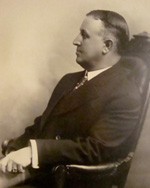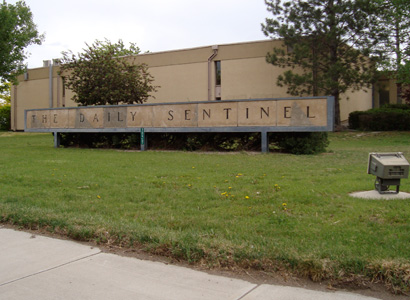Summary
“There are no such things as sleepy towns,” says The (Grand Junction, Colo.) Daily Sentinel Publisher Jay Seaton, “there are only sleepy newspapers.” Citing corruption by city officials in Bell, Calif., a town that didn’t have a newspaper, Seaton vows, “That’s never going to happen here because we’re watching.” The Daily Sentinel takes its watchdog role seriously, and it is aggressive about using public records. (Click on Enterprise Stories) Seaton hopes that “every public official, before they hit the send button on their email, thinks about what that email is going to look like stripped across the top of The Daily Sentinel.”
Seaton grew up in the newspaper business. He watched his father, Edward Seaton, run the Manhattan (Kan.) Mercury, one of several properties owned by the Seaton Publishing Co. Following his father’s advice, he earned a professional degree, became an attorney and practiced law for several years. When the newspaper market was right, Seaton Publishing Co. bought The Sentinel from Cox Enterprises and Jay became publisher in 2009. (Click on Story of the Newspaper)
In October 2010, The Sentinel established a fee for its full-content website. “If you are giving the Internet product away [with the same content as the newspaper] – you are driving consumers to the Internet. That’s just simple economics,” says Seaton, “and that’s an unsustainable business model.” When The Manhattan Mercury introduced a paywall, circulation increased 9 percent. While The Sentinel did not see a similar circulation spike, it “curtailed further [circulation] leakage,” says Seaton. Print subscribers get free access to all The Sentinel’s digital products. A digital-only subscriber also pays the same as a print subscriber. (Click on The Backgrounder to see circulation, revenue, staffing and digital information.)
Managing Editor Laurena Mayne Davis describes a “profound revolution” in their newsroom: “We looked at where we played the news, and local content became page one. “ This was more than a physical change in the newspaper, says Davis, this was a “mindset change too.” Seaton thinks this change has created a more “lively, viable local product.”
Check This
After the Seaton Publishing Co. bought The Sentinel, the newspaper built a new Sentinel website “from the ground up” with a versatile content management system and video capability. Producing video for the website “hasn’t affected our bottom line,” says Seaton. “Until the market drives it, you can’t make money off video,” he says.
Web Editor Duffy Hayes described his job as “driving the website” and serving as the link from the website to reporters and editors. (Since our visit to The Sentinel 5/18/11, Hayes has moved to Argentina. Daniel Humphries is the current Web Content/Systems Editor.)
Click on Journalists’ Epiphanies (J-Epiphanies) on the toolbar to hear anecdotes about when the power and purpose of journalism became clear to Seaton, Davis and Hayes.
Coming Next, a Bonus Interview with Tom Rosenstiel, Director, Project for Excellence in Journalism, followed by the Plains States series: The Lawrence (Kansas) Journal-World, the Aurora (Neb.) News-Register, the Cedar Rapids (Iowa) Gazette, and the St. Cloud (Minn.) Times.
Please follow us and comment on Facebook.
-- Sara Brown and Paul Steinle














